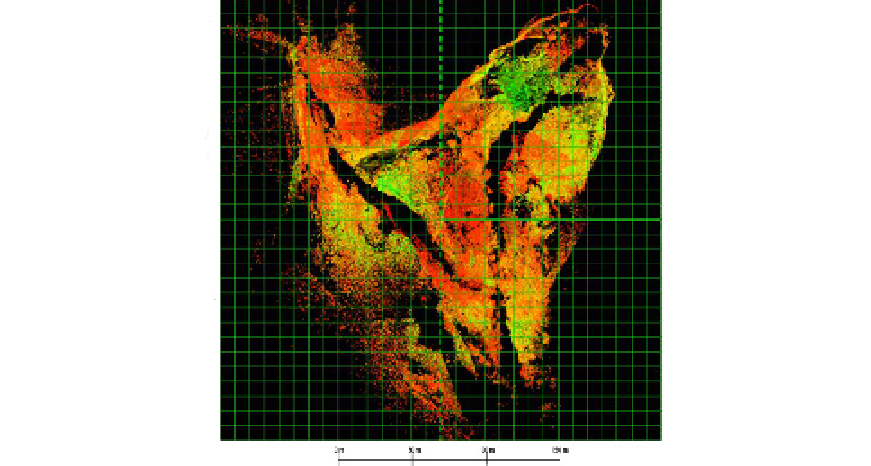Geography Reference
In-Depth Information
geomorphologic risk phenomena are prevented and combated, and how the historical
conditions of the evolution of human habitation can be better interpreted (Figure 2).
Concurrently, the aim is to make the technique versatile enough as to be employed in
various domains: geomorphology (land degradation), agronomy (landscaping, irrigations),
environmental protection, land management, architecture, civil engineering, etc.
Figure 2.
The point-cloud obtained from the measurements conducted in the gully impacting a
Chalcolithic archaeological site from Cucuteni culture
Since 2000, the international literature in the field of laser-based 3D technologies grew
continuously. At the present, certain fields of research, such are geo-archaeology,
geomorphology, photogrammetry etc. created their own methodologies and the papers
published in these fields are greatly sought after. From this point of view, it is important to
mention the use of the 3D scanner in geomorphology [1-25], hydrology [26-29], architecture
[30-32], archaeology [33-35], cartography and topography [36-37], methodology [38-54], etc.
The relief dynamic from Eastern Romania is extremely active and most of the major
archaeological sites are affected by gullying or landslide processes [55-67] (Figure 3). The
ultimate objective of the present undertaking is to elaborate cartographic material
(approximately 25 colour and B&W illustrations) representative and suggestive enough to
demonstrate the dynamic nature of the environment and its impact on relevant and
significative locations. To this purpose, a series of cartographical representations will be
produced, depicting the dynamics of a gully and the effects of several landslides which
affected some Chalcolithic sites belonging to the Cucuteni culture (specifically, Cucuteni-
Baiceni and Habasesti-Holm, Iasi County, Romania), and a river (the Danube) which
affected the morphology of a Chalcolithic tell (an archaeological mound created by
successive human occupation and abandonment of a location over several centuries),
belonging to the Gumelnita culture, from Harsova (Constanta County).

